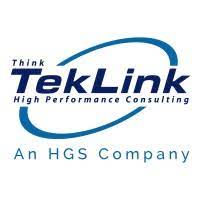SAP Data Science
Filter By
Browse By
- SAP Analytics and AI
- SAP Application Development and Integration
- All SAP Application Development and Integration
- SAP ABAP
- SAP ABAP Development Tools
- SAP ABAP Test Cockpit
- SAP API Management
- SAP BAPI
- SAP Basis
- SAP BRF
- SAP Business Application Studio
- SAP CMS
- SAP Design Studio
- SAP Development Tools
- SAP DevOps
- SAP EAI
- SAP EDI
- SAP Extension Suite
- SAP Fiori
- SAP Fiori Elements
- SAP Integration Suite
- SAP Low Code Application Development
- SAP Low Code Automation
- SAP Netweaver
- SAP Release Management
- SAP UI5
- SAP Web Application Server
- SAP Web IDE
- SAP Business Process Management
- SAP Center of Excellence
- SAP CIO
- SAP Customer Experience
- SAP Data and Data Management
- All SAP Data and Data Management
- SAP BW
- SAP BW/4HANA
- SAP Crystal Reports
- SAP Data Archiving
- SAP Data Center
- SAP Data Governance
- SAP Data Integration
- SAP Data Migration
- SAP Data Quality
- SAP Data Services
- SAP Data Strategy
- SAP Data Visualization
- SAP Data Warehouse Cloud
- SAP DMS
- SAP Document Control
- SAP EIM
- SAP ETL
- SAP ETL Tools
- SAP HANA
- SAP HANA Administration
- SAP HANA Deployment Infrastructure
- SAP HANA Studio
- SAP Master Data
- SAP Master Data Governance
- SAP MDM
- SAP Enterprise Architect
- SAP Enterprise Asset Management
- SAP ERP
- SAP Finance
- All SAP Finance
- SAP Accounting
- SAP AR AP
- SAP Asset Accounting
- SAP Billing Systems
- SAP BPC
- SAP BRIM
- SAP Cash Management
- SAP Central Finance
- SAP Controlling
- SAP COPA
- SAP Cost Center Accounting
- SAP e-invoicing
- SAP FICO
- SAP Finance Automation
- SAP Financial Closing Cockpit
- SAP Financial Consolidation
- SAP Financial Planning
- SAP FX Risk
- SAP General Ledger
- SAP Global Tax Management
- SAP Hyperion
- SAP Order to Cash
- SAP Payment Processing
- SAP Profitability Analysis
- SAP Rebate Management
- SAP S/4HANA Finance
- SAP Universal Journal
- SAP Governance Risk and Compliance
- SAP Human Capital Management
- SAP Intelligent Technologies
- SAP Platform and Technology
- All SAP Platform and Technology
- SAP Business Technology Platform
- SAP Cloud Connector
- SAP Cloud Integration Platform
- SAP Cloud Migration
- SAP Cloud Platform
- SAP Cloud Providers
- SAP Cloud Strategy
- SAP Container Platform
- SAP Digital Asset Management
- SAP Digital Integration Hub
- SAP Digital Signature
- SAP HANA Enterprise Cloud
- SAP HEC
- SAP Hyperscalers
- SAP Infrastructure
- SAP Messaging
- SAP Smart Forms
- SAP Quality and Testing
- SAP Security
- SAP Spend Management
- SAP Supply Chain Management
- All SAP Supply Chain Management
- SAP APO
- SAP Asset Management
- SAP Business Network
- SAP Digital Manufacturing Cloud
- SAP Digital Twin
- SAP EWM
- SAP IBP
- SAP Inventory Management
- SAP Label Printing
- SAP Logistics
- SAP Manufacturing
- SAP Manufacturing Automation
- SAP MES
- SAP MII
- SAP MM
- SAP MRO
- SAP MRP
- SAP Order Management
- SAP Plant Maintenance
- SAP PLM
- SAP Production Planning
- SAP S&OP
- SAP SD
- SAP SPM
- SAP Supply Chain Planning
- SAP Track and Trace
- SAP Transportation Management
- SAP System Administration
Self-service Data Science in SAP Analytics Cloud
SAP Analytics Cloud (SAC) has data science algorithms built-in that can allow non-data science users to perform advanced modeling. Predictive analytics remains a key advanced analytics approach among various analytical approaches. In this blog, we will explore the smart predict functionality of SAC and understand how expert, non-data scientist users can leverage them to build predictive analytics models.
Self-service Data Science in SAP Analytics Cloud
SAP Analytics Cloud (SAC) has data science algorithms built-in that can allow non-data science users to perform advanced modeling. Predictive analytics remains a key advanced analytics approach among various analytical approaches. In this blog, we will explore the smart predict functionality of SAC and understand how expert, non-data scientist users can leverage them to build predictive analytics models.
What are predictive analytics algorithms?
A simplified explanation of predictive analytics is that it is a form of advanced analytics that helps make future predictions based on historical data. Predictive analytics models do so by leveraging a combination of statistics, data mining, and machine learning (ML) algorithms.
SAP Analytics Cloud Smart Predict helps perform self-service data science by using the power of augmented analytics. Augmented analytics is a term assigned to a collection of features enabled by artificial intelligence (AI) and ML that perform some complicated tasks in order to allow users to perform advanced analytics they would not have been able to perform by themselves. Smart Predict allows the users to build advanced models, including ML algorithms, with a few simple clicks. As SAP puts it: “The focus is on the business questions, not algorithms, which helps speed the prediction and recommendation process”.
Overview of the Smart Predict Process
Select the model algorithm: When you open a new predictive modeling scenario, you get the option to choose the appropriate algorithm. Three key options are available which are listed below:
- Classification
- Regression
- Time Series
You can select the model based on the business question that you are trying to answer. For example, will a particular customer default on a credit card payment? In a subsequent blog, Once you chose an algorithm, the underlying augmented analytics functionalities will present to you an interface that you can use to:
- Select the underlying data source
- Select the variables in your data that you believe are relevant for your analysis
- Select the variable roles, like the variable that you want to predict (target variable) and the predictors, dates, etc.
Smart Predict then trains on the selected data and builds a predictive model that aligns best with the underlying data, variables, and other parameters selected. Training, parameter setting, and optimization are all taken care of by Smart Predict. It will then present to users an output report, along with some form of performance indicator of the model. The performance indicator will vary by model type.
Here are a couple of resources that you can leverage to gain depth in the topic of augmented analytics:
Bring the Power of Machine Learning Directly to Business Users
11 results
-

Case Study: Pyramid Empowers Premier Foods
Reading time: 1 mins
Premier Foods is home to the UK’s most-loved food brands. Found in 93% of British households, it has over 4,000 employees and operates from 15 locations in the UK.
-

Why Hyperscalers Need to Become Consulting Companies
Reading time: 10 mins
By Kumar Singh, Research Director, SAPinsider The future is going to be inevitably cloudy But in a positive way. If you regularly follow my blogs, you may be a bit irritated by now as I repeatedly hammer “cloud is the future”. And it is not only in terms of technology infrastructure. Companies will, eventually, operate…
-

Leveraging Analytical Methods for Ranking Suppliers
Reading time: 4 mins
In the real-world, sourcing executives generally have a large pool of suppliers to select from. In terms of leveraging analytics, the problem of ranking suppliers (pre-qualification) represents a class of multiple criteria optimization problems that deal with the ranking of a finite number of alternatives, where each alternative is measured by several conflicting criteria. In…
-
-

How to Retain Your Data Science Talent
Reading time: 5 mins
By Kumar Singh, Research Director, SAPinsider Attrition in Data Science teams had hit an all-time high prior to the pandemic. And now we are looking at “The Great Resignation”. There is no speculating what type of talent is the most desired (and required) in this digital decade as companies scramble to attract as well as…
-

Building Scalable Analytics Solutions : A Manufacturing Example
Reading time: 3 mins
By Kumar Singh, Research Director, Automation & Analytics, SAPinsider The killer of ROI on analytics investments – siloed solutions Every white paper, think tank perspective, analytics body of knowledge, research- they are all screaming one thing loud and clear in your ear: Building analytical capabilities within your operations is a must to compete and thrive…
-

- SAP Data Science
 Premium
Premium
Turning data chaos into data value with SAP Data Intelligence
In the age of big data and business intelligence, data catalogs are becoming the essence of metadata management, helping and guiding data users better understand their data and its importance. A data catalog focuses on data assets and connects the data sets within the assets with its related metadata to help the users of the…
-

- SAP Data Science
 Premium
Premium
Unlocking the full potential of your SAP data
Getting your data out of SAP can be a sensitive topic. You have to consistently plan on how to safely extract it and ensure you are maintaining compliance with your SAP licensing and working with your SAP teams. This session will answer your questions around how to unlock your raw SAP data fast and start…
-
-

- SAP Data Science
 Premium
Premium
Combining Operations Research (OR) and Machine Learning (ML)
Reading time: 6 mins
If you are an active resident of analytics land, you know that Artificial Intelligence (AI) and Machine Learning (ML) tools are the new bosses in town. Every tool, technology, and technology solution around you tries to incorporate them in their solution in some form. And all this limelight on AI and ML has pushed the…
-

Helping “Data-Rich, Insight-Blind” Organizations Make Sense of Their Complex SAP Systems
Reading time: 7 mins
Bas Kamphuis, General Manager of Magnitude Software shares how he is leading the Magnitude Productivity business, capitalizing on the digital revolution by defining and executing the company’s global strategy in the SAP ecosystem, driving product definition and the product roadmap, and growing revenue and market share via a customer-oriented culture and strategic partnerships. In this…
-

How Can Data Science Help Businesses Thrive?
Reading time: 3 mins
In today’s climate of economic uncertainty, many firms are looking to reposition and adapt through automation. Investing in robotic process automation (RPA) can help SAP customers reduce bottlenecks and improve workplace efficiency. Bots can automatically perform manual and repetitive tasks, reducing the need for human intervention. However, firms need data scientists to oversee these systems…
Featured Insiders
-

Joerg Boeke
SAP BW / HANA Solution Architect, Manging PArtner BIAnalyst Gmbh & Co. KG
-

Damien Johnson
Global Chief Architect - RISE Ecosystems, SAP
-

Prathyusha Garimella
Senior Engineer at SAP America, Inc.
Become a Member
Unlimited access to thousands of resources for SAP-specific expertise that can only be found here.
Become a Partner
Access exclusive SAP insights, expert marketing strategies, and high-value services including research reports, webinars, and buyers' guides, all designed to boost your campaign ROI by up to 50% within the SAP ecosystem.
Upcoming Events
Related Vendors
Your request has been successfully sent


